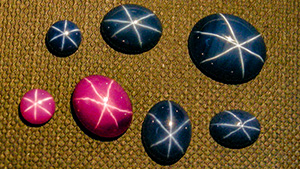

Elise A. Skalwold, Nathan Renfro, and John I. Koivula, July 30, 2015
G&G’s new column takes a closer look at the hidden wonders found in gemstones.
Read More
Elena S. Sorokina, Andrey K. Litvinenko, Wolfgang Hofmeister, Tobias Häger, Dorrit E. Jacob, and Zamoniddin Z. Nasriddinov, July 31, 2015
This large marble-hosted occurrence in the Pamir Mountains is a potentially productive source of corundum, including ruby with a bright red color reminiscent of “pigeon’s blood” Burmese rubies.
Read More
Nathan Renfro, July 31, 2015
A guide to capturing gem inclusion scenes using practical equipment and techniques and the appropriate image-refining software.
Read More
Karl Schmetzer, Martin P. Steinbach, H. Albert Gilg, and Andrea R. Blake, July 31, 2015
Examines a form of asterism comprising two six-rayed stars, one white and one that exhibits the stone’s bodycolor. Firsthand accounts and a survey of patent documents reveal that diffusion has been used to create or enhance this optical phenomenon in synthetic and possibly natural corundum since the 1950s.
Read More
Elise A. Skalwold and John I. Koivula, July 31, 2015
A cracked apatite specimen reveals hidden treasure.
Read More
Larry Tai-An Lai, July 31, 2015
A carving identified as blue chalcedony shows evidence of epoxy resin treatment.
Read More
Paul Johnson and Wuyi Wang, July 31, 2015
A natural Fancy Intense blue diamond submitted to the New York lab shows the highest boron concentration ever reported in a natural specimen.
Read More
Nathan Renfro, July 31, 2015
A musgravite specimen’s inclusions result in an optical phenomenon unusual for the material.
Read More
John I. Koivula, July 31, 2015
Inclusions create chatoyancy in a colorless phenakite cabochon.
Read More
Nathan Renfro and John I. Koivula, July 31, 2015
A pink sapphire bead with drill holes revealing ruby fragments is examined.
Read Morepast gems & gemology issues



